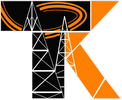HIGH-QUALITY ALL-FREE BEFORE INFOCOMMUNICATION SYSTEMS AND TECHNOLOGIES, SOFTWARE PLATFORM INFOCOMMUNICATIONS
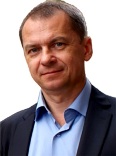 Leader - Doctor of Technical Sciences, prof. S.O. Kravchuk
Leader - Doctor of Technical Sciences, prof. S.O. Kravchuk
Scientific and technical foundations were developed for the creation and operation of broadband access wireless systems with mobility support and their integration into high-speed multi-level ubiquitous information and telecommunication networks, the creation of a new generation of software-defined infocommunication radio systems, which are designed to create the technical basis for the implementation and implementation of next-generation information and communication systems especially 5th generation mobile systems
The domestic theory of the millimeter-wave telecommunication systems, the principles of creating nano-networks, methods for implementing software and hardware systems (programmed controlled radio SDR (Software defined Radio) together with system technology on a SoC chip (System-on-a-Chip)) , software platforms for managing networks and countering hacker attacks, handover methods and architectural solutions in mobile communication systems, digital radio-relay systems (including over-the-horizon communications) and combined systems based on high-altitude aerial platforms.
In particular, the following results were obtained in terms of development and formation:
spatial-temporal processing of MIMO - developed methods of effective implementation of MIMO in cellular communication systems; the method of linear spatial transformation of a multi-user system with MIMO is proposed; proposed approaches to increase the bandwidth of the radio system with MIMO;
cooperative relay - the problem of multiservice transmission in the radio system on the basis of OFDMA with cooperative relay is solved;
cognitive radio - developed principles, methods and algorithms for the introduction of cognitive radio technology for the construction of heterogeneous telecommunication networks;
special use communication channels - portable tropospheric station of the fore-out connection is developed; communication and control channels for unmanned aerial vehicles have been developed;
adaptation - a new method of channel adaptation for application in wireless telecommunication systems is developed. The method is based on the use of multicriteria assessments of the state of the communication channel and the application of a decision of the mathematical apparatus of fuzzy sets.
Theory of Information - A new generalized integrated approach to constructing effective methods for increasing the bandwidth (RP) of the SSR has been developed, providing the necessary noise immunity and taking into account their features, based on the interaction of band and energy resources of the system.
MODELS AND METHODS OF MANAGING NETWORKS SDN
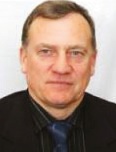 Leader - Doctor of Technical Sciences, prof. OI Romanov
Leader - Doctor of Technical Sciences, prof. OI Romanov
The peculiarities of construction of SDN networks (Software Defined Networking), in particular:
- analysis of existing recommendations for SDN construction;
- multi-level architecture of the network;
- principles of building the main elements of the network;
- operating conditions and control tasks in SDN networks;
- virtualization of resources in SDN networks;
- Physical and software models of the SDN networks.
Wireless sensor network with self-organizing to monitor parameters ENVIRONMENT
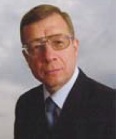 Leader - Doctor of Technical Sciences, prof. OI Lysenko
Leader - Doctor of Technical Sciences, prof. OI Lysenko
-The method of energy-saving data aggregation in the wireless sensor network with mobile sensors and telecommunication airplanes has been developed by identifying and excluding duplicate information, which allows 5-20% to extend the time of active network operation;
- An intelligent method for controlling the wireless sensor network with mobile sensors and telecommunication airplanes has been developed, due to the use of weak artificial intelligence methods for predicting network properties in unstable operating conditions, which makes it possible to control the dynamic topology of the network in real time.
THERAPEUTIC TECHNOLOGIES IN TELECOMMUNICATIONS
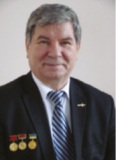 Leader - Doctor of Technical Sciences, prof. T.M. Naryntik
Leader - Doctor of Technical Sciences, prof. T.M. Naryntik
The current trends in the development of fourth-generation (4G) and fifth-generation (5G) mobile communications distribution networks, terrestrial digital terrestrial TV networks, military mission control systems, and anti-terrorism measures involve the exchange of large volumes of data.
Fiber optic networks provide gigabit data rates in many parts of the world. But modern telecommunication networks also need
a similar opportunity to exchange data in places where fiber optic access does not exist or its organization is not economically viable.
Satellite communication can provide communications in remote areas, but can not always guarantee the high speed of transmission needed to maintain
access to modern multimedia services with a large number of users.
Today the actual task is to build high-speed mobile communication networks of the fourth (4G) and fifth (5G) generations using terahertz-fixed telecommunication fixed-radio systems and switching to small cells (microcells, peacock cells and femtocells) that are basic stations with a limited ra
IMPULSIBLE SIGNALS (I-UWB) FOR TELECOMMUNICATION SYSTEMS
Compared to the traditional I-UWB harmonic signals, there are a number of advantages:
- Larger bandwidth of communication channels.
- Significantly less power for terminals.
- Unique high permeability ability.
- Signals are hard to detect, which ensures unauthorized access to transmitted information.
- the possibility of high-precision detection of the localization of terminals (centimeters at distances in kilometers.
- Transceivers can be created in miniature sizes
- The principles of construction of self-organizing radio networks using pulsed ultra-wideband signals that significantly increase the throughput of such networks are developed. Protocols of interaction of subscribers in these networks are developed. The theoretical concept of decentralized management of radio networks with self-organization is created that will not require the creation of a fixed infrastructure.
- An energy comparison of pulsed ultra-wideband signals with traditional satellite and terrestrial routes of different lengths has been carried out, which made it possible to estimate the energy gain from the use of this type of signals.
- The method of "non-energy" reception of pulsed ultra-wideband signals is developed. The receiver circuit is developed on the basis of such an approach to the detection of ultrashort pulses.
- The simulation model of the receiver of pulsed ultra-wideband signals was developed and investigated. A model of the main part of the receiver, the purpose of which is the allocation of pulses from the received signal, is created.
MICROWAVE FILTERS FOR TELECOMMUNICATIONS
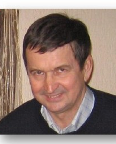 Leader - D.Sc., Ph.D. O.V. Zakharov
Leader - D.Sc., Ph.D. O.V. Zakharov
The hardware of telecommunications and electronic systems of various purposes have as an integral part of their constructions the filters that form the frequency channels of information transmission
Main results:
1. Opening of the effect of electromagnetic interaction of strip resonators in combing (λ / 4) and lattice (λ / 2) structures. A new direction for constructing microwave filters.
2. The nature of the effect of the shape of strip resonators on the coefficients of electromagnetic coupling at the main and higher resonance frequencies. Positive and negative communication ratios. New method of suppressing parasitic bandwidth.
3. Unique property of asymmetric resonators. Filters with alternating link symbols and two attenuation poles.
4. Fundamental property of strip structures: the coupling coefficient does not depend on Er, but depends only on the geometric design parameters.
5. Patterns of control of the movement of the attenuation poles and the construction of strip filters with elliptic characteristics.
6. The effect of the transition of the coupling coefficient through zero and the initiation of a new class of nonminimal phase filters with two-level arrangement of resonators.
FIBER-OPTICAL AND LASER SENSORS - GONIOMETERS
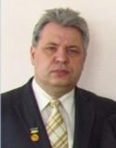 Leader - Assoc. SV Ivanov
Leader - Assoc. SV Ivanov
Fiber optic and laser gauges (goniometers) - sensors for measuring the angle of the object, which can be used in many fields of science and technology, as well as in telecommunications (measuring the angle of rotation of antennas).
Creation of this class of devices became possible only with the development and improvement of the elemental basis of quantum electronics. The principle of operation of an optical goniometer is based on the vortical effect of Sagnac.
The interest of foreign firms in optical goniometers is based on their potential applications in many fields of science and technology. These devices can in some cases completely replace expensive expensive electromechanical devices.
The Institute of Telecommunication Systems has developed several types of sensors of different accuracy based on original technical solutions.
SPATIAL-TIME RADIOGRAPHIC PROCESSING IN THE FRENELLA ZONE FOR USE IN TELECOMMUNICATION SYSTEMS AND RADIOLOCATION
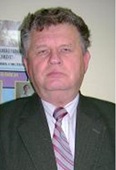 Leader - Ph.D., Prof. Ye.A. Yakornov
Leader - Ph.D., Prof. Ye.A. Yakornov
The direction of development and improvement of wireless telecommunication systems (TCS) as spatial processing of signals in the shape of the phase front of an electromagnetic wave (EMX) is explored. The issue of the practical application of spatial processing is represented by developments on the improvement of the functional capabilities of phase finders and phase coordinate systems, in particular the possibility of determining the range of the location of the radio emission source (DRV) in the Fresnel zone. The features of the use of spatial signal processing on the form of the phase front in the perspective development of the radio relay communication lines (РРЛЗ) for ensuring the reuse of their radio frequency resource are determined. The laboratory model of simplex RLZZ is presented, which provides transmission of two digital radio signals at a rate of 41 Mbit / s due to the use of spatial processing of signals in the shape of the phase front of the EMH.
INFORMATION LAW; INFORMATIATION; TELECOMMUNICATIONS, USE OF RADIO FREQUENCY RESOURCE; INFORMATIONAL SECURITY
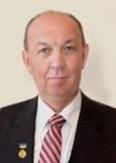 Leader - D.Yu.N., prof. O.A. Baranov
Leader - D.Yu.N., prof. O.A. Baranov
The study of the peculiarities of the information society as a society with widespread use of computer information technologies, as well as its main categories - the information sphere, information infrastructure, information, information processes and much more. It is shown that information law, as a result of the dialectical development of legal regulation in the information sphere, is a system-forming factor in the information society.
The research of theoretical and methodological problems of legal support of information sphere was conducted. The main attention is paid to the study of theoretical and methodological problems of the formation and formation of information law, comparative legal analysis of Ukrainian, European information law and international law. In addition, the issues of the practice of using the domestic information legislation were investigated and concrete recommendations for its improvement were proposed.
